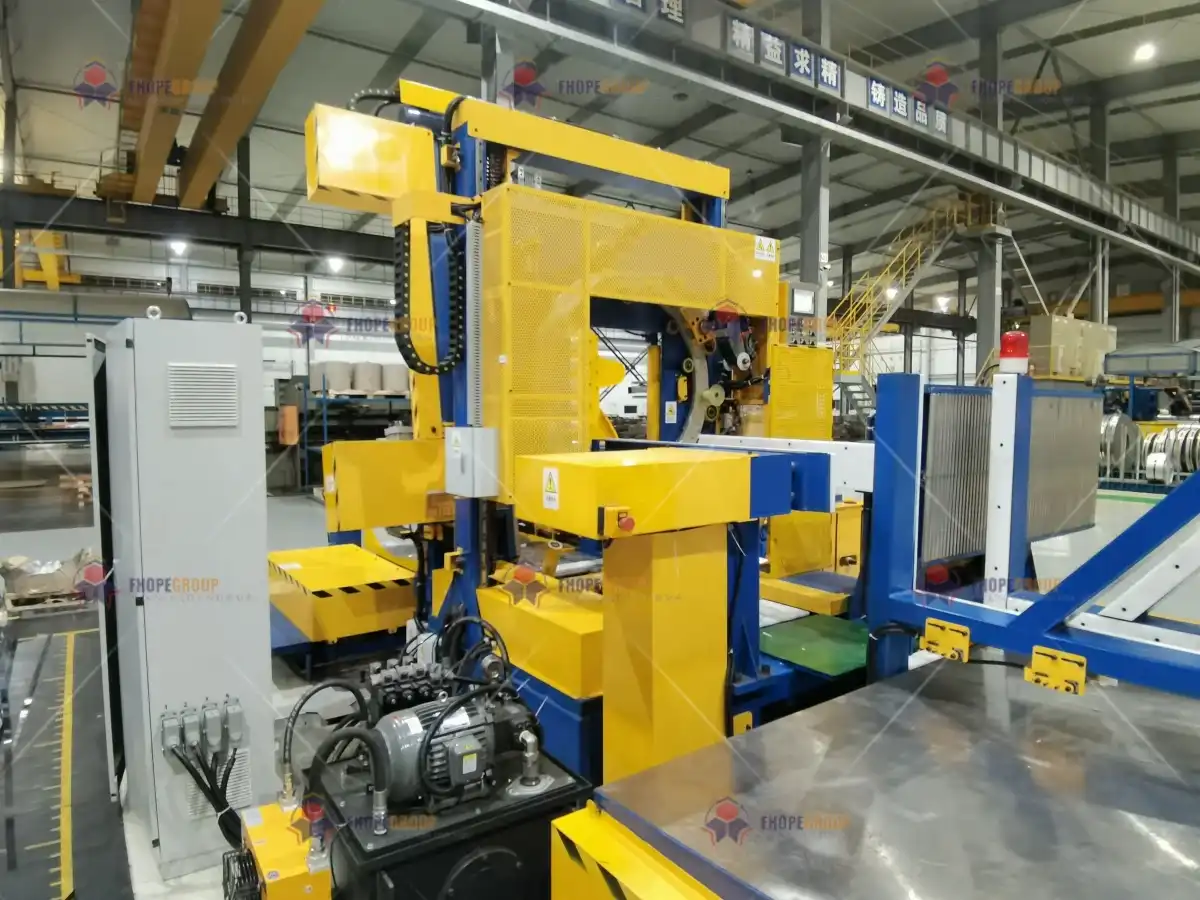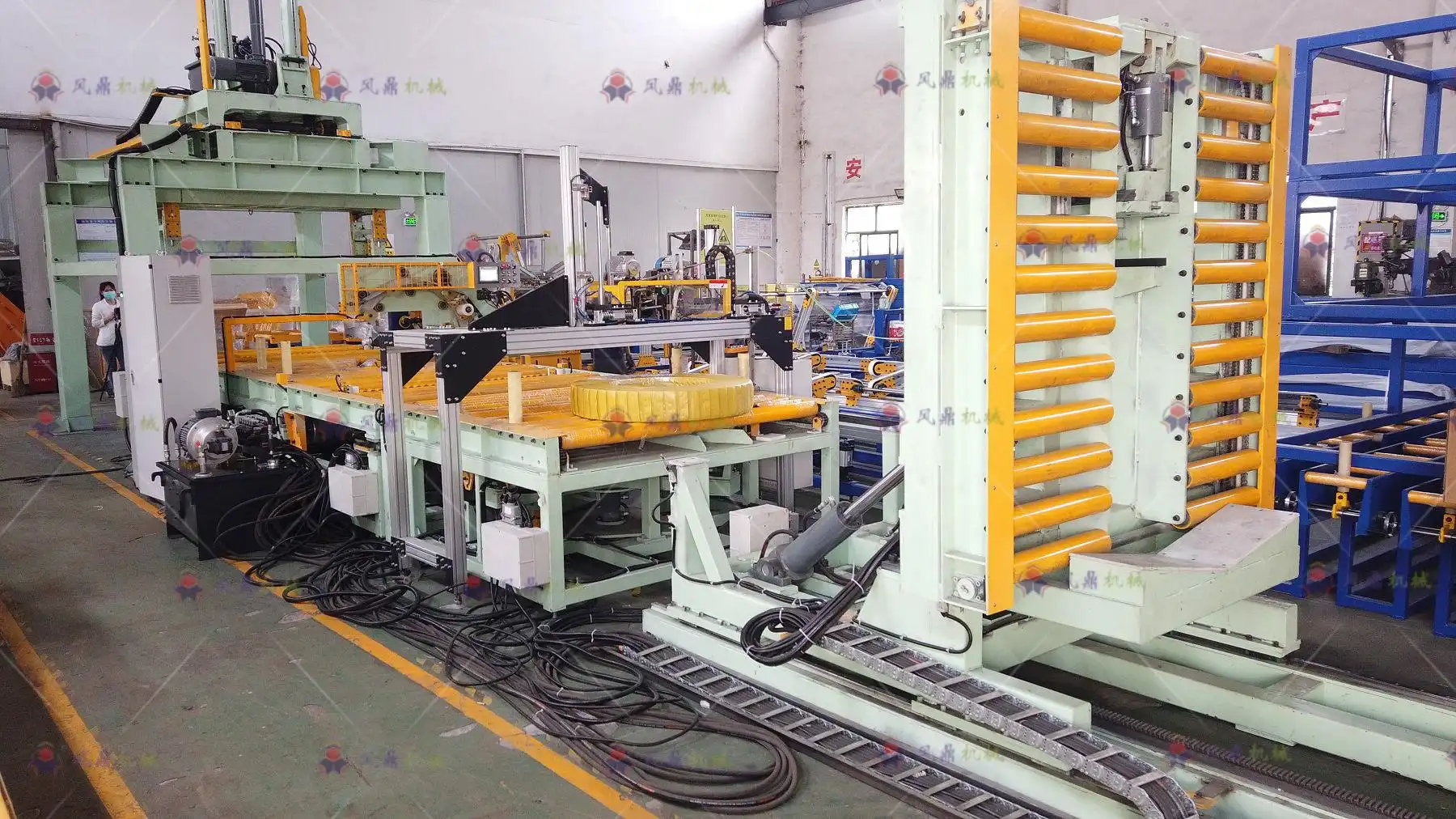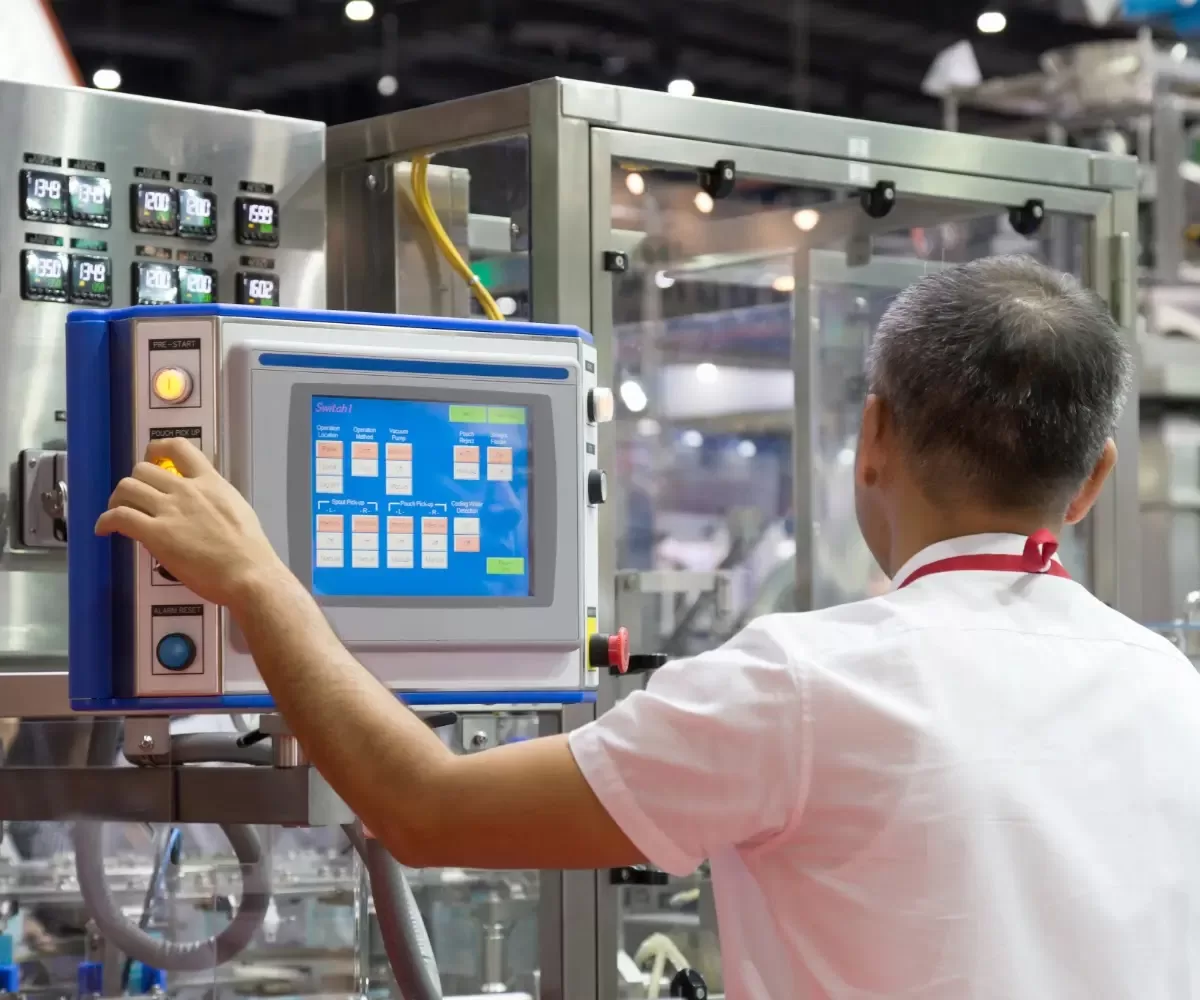Are you running a steel service center or mill in Spain? You know that your slit coil packing line is the final, critical step before your product reaches the customer. A breakdown here doesn't just stop one machine; it can bring your entire production to a standstill. The fear is real: you find a cost-effective packing line from a global supplier, but what happens when you need urgent support? The thought of waiting for a technician or a tiny spare part to travel thousands of miles, navigating customs and language barriers, is a nightmare. This potential for massive downtime and lost revenue can make any manager hesitant. But there is a solution. You can get the world-class engineering and value of a leading manufacturer with the peace of mind of having local support and rapid spare parts delivery right there in Spain. This isn't just a sales pitch; it's the modern, intelligent way to secure your operations.
For steel mills and service centers in Spain, securing a slit coil packing line with reliable local support and rapid spare parts delivery means partnering with a manufacturer that has an established European service network. This includes having Spanish-speaking technicians available and a dedicated spare parts warehouse in Europe. This structure is designed to minimize your downtime and ensure service requests are handled swiftly and effectively, protecting your production schedule and profitability.

I've spent my entire career in the packing machine industry, first as an engineer and now as a factory owner. I’ve seen firsthand how a simple machine failure can create huge problems for a business. I understand your concerns are not just about the machine's price, but about its long-term reliability and the support you receive. Your investment needs to be protected. So, let's break down the most common questions I hear from owners and CEOs like you. I want to address these concerns head-on and show you how a global partnership can feel truly local.
How can a Chinese supplier provide effective local support in Spain?
The idea of managing a critical equipment issue with someone in a different time zone, speaking a different language, seems impossible. You might picture long delays, frustrating conference calls, and solutions that don't quite understand your specific operational needs in Spain. This perceived risk is often the biggest barrier to accessing top-tier global technology at a fair price. But a forward-thinking supplier doesn't expect you to bridge that gap. Instead, we build the bridge for you, establishing a robust support system right in your region.
A Chinese supplier provides effective local support in Spain by creating a hybrid support model. This involves partnering with qualified local engineering companies, training their Spanish-speaking technicians on our specific machinery, and using advanced remote diagnostic tools for immediate first-response troubleshooting. This approach gives you the best of both worlds: the cost and innovation advantages of our manufacturing scale, combined with the speed and cultural understanding of a local service team.

Dive Deeper: The Anatomy of a Hybrid Support Model
This isn't just about having a phone number for a contractor in Europe. It's a carefully designed system to ensure you get help when you need it. I know that for a CEO like Javier, who has built his steel business from the ground up, results are what matter. A system must be reliable and efficient.
The Local Technical Partner
The foundation of our support in Spain is our network of local technical partners. We don't just pick any engineering firm. We go through a rigorous vetting process. We look for companies with deep experience in industrial automation and mechanical maintenance within the Spanish market. They already understand local safety regulations and work culture. Once selected, their key technicians undergo extensive training on our equipment. This training is not a one-time event. We provide continuous updates and hands-on sessions for every new machine model or software update. These technicians become certified experts on SHJLPACK equipment. They handle on-site installation, commissioning, preventative maintenance, and emergency repairs. They speak your language and are often just a few hours' drive away.
The Power of Remote Diagnostics
For many issues, we can provide a solution in minutes, not days. Our modern packing lines are equipped with secure, remote-access modules in their PLC systems. If you have an error, your on-site team can grant our senior engineers at SHJLPACK headquarters temporary access to the machine's control system. We can see the same alarms your operator sees. We can review sensor data, check program logic, and analyze the operational history. This allows us to diagnose the problem with incredible accuracy. We can then guide your local maintenance team or our Spanish technical partner through the exact steps to fix it. This remote capability solves over 80% of software or control-related issues without anyone needing to travel. It dramatically reduces response time and cost.
This table shows the clear advantage:
| Support Feature | Traditional Remote Model | SHJLPACK Hybrid Model |
|---|---|---|
| Initial Response | Email/Call to HQ (Time zone delay) | Call to Local Partner (Same business hours) |
| Language | English / Mandarin | Spanish / English |
| Troubleshooting | Back-and-forth descriptions | Remote PLC access + on-site technician |
| First-Time Fix Rate | Low (<40%) | High (>90%) |
| Travel Cost | High (International flights) | Low/None (Regional travel or remote fix) |
| Resolution Time | Days or Weeks | Hours or 1-2 Days |
What's the real cost of downtime from slow spare parts delivery?
A small sensor on your packing line, costing maybe a hundred euros, fails. The machine stops. But the replacement part is warehoused on another continent. It has to be picked, packed, shipped internationally, and clear customs. This process could take days, or even weeks. While you wait, your entire slitting line, a multi-million euro investment, sits idle. Finished coils pile up, blocking floor space. Customer orders are delayed, possibly incurring contractual penalties. The true cost isn't the hundred euros for the sensor; it's the tens of thousands of euros in lost production for every hour the line is down.
The real cost of downtime from slow spare parts delivery is the massive cascade of operational and financial losses that follow a machine stoppage. It includes the lost revenue from products you can't ship, the wages of an idle crew, the potential for late delivery fees, and the long-term damage to your reputation as a reliable supplier. For a steel mill producing 2 million tons annually, this hidden cost can easily surpass €20,000 for every hour of an unplanned shutdown.

Dive Deeper: Quantifying the Impact and the Solution
An analytical mind like Javier's understands that you can't manage what you don't measure. The threat of downtime is not just an inconvenience; it's a direct threat to your P&L and your goal of achieving 95% equipment uptime. Let's break down the numbers and the strategy to mitigate this risk.
A Simple Calculation of Your Downtime Cost
To put this in perspective, let’s use Javier’s 2-million-ton plant as an example.
- Calculate Hourly Revenue: If your plant's annual revenue is, say, €1.2 billion, and it operates 6,000 hours a year (approx. 24/7 with planned maintenance), your revenue per hour is €200,000. If the packing line is the bottleneck for 10% of that production, a stoppage costs you €20,000 in lost revenue every hour.
- Add Idle Labor: You may have a crew of 3-5 people operating the line and associated logistics. At an average loaded labor cost of €40/hour in Spain, that's another €120-€200 per hour of unproductive cost.
- Consider Other Costs: This doesn't even include potential penalties for late shipments or the cost of express freight for the spare part. The total quickly climbs.
The Strategic Parts Warehouse
This is why we've established a European spare parts warehouse. It's not just a room with some boxes. It's a data-driven logistics hub. We analyze the Mean Time Between Failures (MTBF) for every critical component on our machines. We use this data to decide what to stock locally versus what can be shipped from our main factory.
This table illustrates our stocking strategy:
| Component Type | Example | MTBF | Consequence of Failure | Stocking Location |
|---|---|---|---|---|
| Critical Wear Parts | Sensors, Belts, Pneumatic Valves | 6-24 months | Immediate Line Stoppage | Europe Warehouse |
| Custom Mechanicals | Main Roller Assembly, Gearbox | 10+ years | Catastrophic Failure | SHJLPACK HQ (Ship on demand) |
| Standard Electrics | Contactors, Relays, Fuses | 2-5 years | Quick Stoppage | Europe Warehouse |
| Control Components | PLC, HMI Screen, Servo Drive | 7+ years | Major Failure | Europe Warehouse (1-2 units) |
By stocking the high-frequency, high-impact parts in Europe, we can often get a replacement part to a facility in Spain within 24-48 hours. This turns a potentially week-long disaster into a one-day maintenance event. It's a crucial part of delivering a "Total Solution," not just a machine.
How does a modern slit coil packing line help meet environmental and cost-saving goals?
You're under constant pressure. The government is implementing stricter environmental standards, demanding a smaller carbon footprint. At the same time, the market is squeezing margins, forcing you to lower your operational costs. Investing in new equipment can feel counterintuitive when you’re trying to cut spending. Your old packing line, which has been running for over 15 years, is likely inefficient, consuming excess power and wasting packing materials. It seems like you’re stuck between two conflicting goals.
A modern slit coil packing line is engineered specifically to resolve this conflict. It's not a cost center; it's an investment in efficiency. By using energy-saving servo motors instead of old hydraulic systems, optimizing the use of wrapping materials, and enabling full automation, the machine directly tackles your biggest cost drivers. It helps you meet your goal of reducing unit energy consumption by 10% and overall operational costs by 8%, all while improving your environmental scorecard.

Dive Deeper: Engineering for Profitability and Sustainability
When I design a machine, I think like an engineer and a business owner. The machine must perform its function flawlessly, but it must also contribute positively to the owner's balance sheet. For a leader like Javier, who has successfully introduced technologies like waste heat recovery, the technical details of efficiency are paramount.
A Revolution in Energy Consumption
Legacy packing lines often rely on a large hydraulic power unit. This unit has a motor that runs continuously to maintain pressure, even when the machine is idle between coils. This is a massive energy drain. A modern SHJLPACK line uses all-electric servo motor technology. Each motor only draws significant power when it is performing an action—turning the coil, moving a strapping head, or conveying a pallet. When the machine is waiting for the next coil, its energy consumption is minimal. Combined with Variable Frequency Drives (VFDs) on all major motors, which ramp up and down smoothly instead of drawing a huge current on startup, the energy savings are substantial. It is very realistic to see a 30-50% reduction in electricity use compared to a 15-year-old hydraulic design, directly helping you meet that 10% overall plant reduction goal.
Precision in Material Usage
How much plastic film or paper is your current line wasting? Older systems often work on a fixed timer, applying the same amount of wrap to every coil, regardless of its width or diameter. This leads to over-wrapping on smaller coils, wasting material and money. Our new lines use sensors to measure the exact dimensions of each slit coil. The system then calculates the precise length of wrapping material needed for the specified number of layers. This can reduce your consumption of VCI paper, stretch film, and other materials by 15-20%. Over a year, this adds up to a significant cost saving and a measurable reduction in plastic waste, which is a big win for environmental compliance.
Here's a comparison:
| Feature | Legacy Line (>15 years) | SHJLPACK Modern Line | Annual Savings Impact |
|---|---|---|---|
| Power System | Hydraulic (Constant run) | All-Electric Servo (On-demand) | €10,000 - €15,000 in electricity |
| Material Application | Timer-based (Fixed amount) | Sensor-based (Precise amount) | €8,000 - €12,000 in film/paper |
| Labor Requirement | 2-3 Operators per shift | 1 Supervisor (overseeing) | €100,000+ in labor costs |
| Data & IoT | None | Full integration with MES/ERP | Unlocks predictive maintenance savings |
What should I look for in a "strategic partner" for my next packing line investment?
You've met countless suppliers. They arrive with glossy brochures and competitive price lists. They can sell you a machine. But what happens after the ink is dry on the contract? Many simply disappear, and you're left to figure things out on your own. When a problem arises, you discover you didn't just buy a machine; you bought a problem. A packing line is a 15 to 20-year asset. Choosing the wrong supplier is a mistake that can negatively impact your operations for decades. It's a decision that deserves more than a simple price comparison.
When looking for a strategic partner, you must look beyond the initial price tag of the equipment. A true partner proves their value through deep industry knowledge. They don't offer a standard machine; they work with you to design a customized solution. They provide a clear, transparent plan for after-sales support, and they have a portfolio of successful clients who can attest to their commitment. They are invested in your growth, not just in making a single sale.

My Insights: From a Factory Floor to Your Partner
I want to share a personal perspective. My journey in this industry has given me a unique point of view. I started as an employee, a young engineer on the factory floor, and later built my own successful packing machine factory. I achieved financial independence because of this industry, and I feel a deep sense of gratitude. That's why SHJLPACK is not just a company to me; it's a platform to give back, to share what I've learned, and to help people like you make the right choices.
The Day I Understood Partnership
I remember a moment early in my career. We had a customer who needed to pack and stack coils in a very specific way that our standard machine couldn't handle. My manager at the time just wanted to push our existing model. But I saw the customer's problem. I spent my own time sketching a new conveyor and lifter design. I presented it to my boss and the client. We built that custom solution, and it completely eliminated their bottleneck, allowing them to take on more orders. That company is still a loyal client today. That experience taught me the most important lesson of my career: we are not in the business of selling machines; we are in the business of solving problems. When I founded SHJLPACK, this became our guiding principle.
The Questions a Partner Asks
You can tell the difference between a supplier and a partner by the questions they ask.
- A supplier asks: "Which model from our catalog do you want?"
- A partner asks: "What is your target tons-per-hour? What are your downstream logistics? What are your growth plans for the next five years? How can we help you achieve your cost-reduction goals?"
A partner is curious about your business. They want to understand your challenges and goals so they can configure a solution that truly fits. They are thinking about your future, not just their current sales quota.
This checklist can help you evaluate potential suppliers:
| Aspect | Commodity Supplier | Strategic Partner (SHJLPACK) |
|---|---|---|
| Focus | The sale | The solution & your success |
| Solution | Standard, one-size-fits-all | Customized to your specific needs |
| Communication | Transactional | Consultative and ongoing |
| After-Sales | A cost, often an afterthought | A core part of the value proposition |
| Goal | To sell you a machine | To help you improve your business |
I am grateful for what the coil packing industry has given me. It has allowed me to build a life and help many clients grow their businesses. Now, my mission is to share that expertise, to be transparent, and to act as a true partner to anyone who places their trust in us.
Conclusion
Choosing your next slit coil packing line isn't just about the hardware. It is about guaranteeing your uptime with fast, local support and building a partnership that supports your long-term growth.




